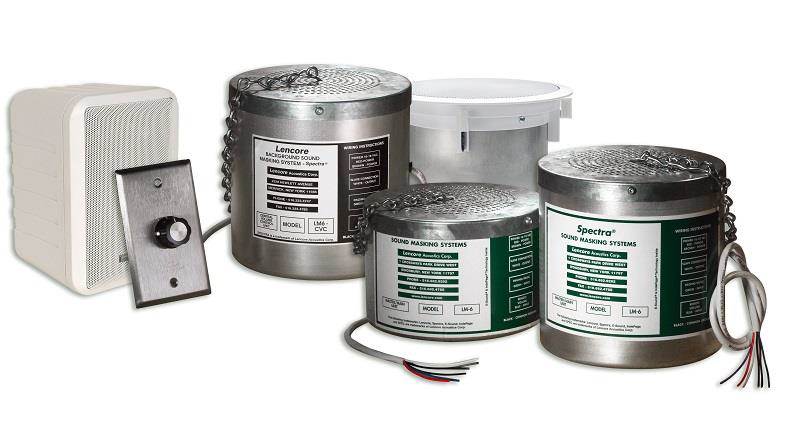In open layouts – whether it’s offices, libraries, or museums – noise often becomes a major concern. Without a proper background noise, loud noises are particularly distracting, due to the Dynamic Range that occurs (difference between quietest and loudest moments). Large dynamic ranges make it difficult for employees to concentrate or visitors to enjoy the space.
We apply the ABC (Absorption, Blocking, Cover) approach to many of our consultations, but open spaces often don’t allow for sound-blocking solutions, and additional absorption makes little or no improvement.
Sound masking is the addition of a white noise or pink noise system of light background sound. This particular frequency of sound essentially helps break up the silence and reduce audible distractions of human speech or impulse sounds. When used correctly, sound masking systems allow for greater productivity, increased privacy and comfort and a more enjoyable workplace.
See our Commercial Office Sound Masking System
Sound Masking System Design
Speech privacy and sound masking go hand-in-hand. Speech privacy is the ability of an unintentional listener to overhear and understand another person’s conversation. This is common in large ‘bullpen’ open office environments or in adjacent offices where walls don’t go to deck and sound has a clear flanking path to transfer in and out. Not only is a lack of speech privacy distracting it can also become a breach of confidentiality in law offices or physician patient rooms.
One recent project Commercial Acoustics treated was a library in Pinellas County, Florida. Readers were often distracted by a “Makers Area” where louder interaction was common. Since the wall didn’t go to deck and deck and it wasn’t possible to add a barrier between the areas, sound masking was the obvious solution. Masking consists of speakers that hang above the area (often concealed by ceiling tiles) that create a constant, homogeneous background noise at a decibel level that the visitors don’t notice but masks unwanted sounds. In this area, we spaced the speakers at 15 ft on center, and implemented a 45 dBA background (lower than most office settings). Within 2 weeks and at about $1 per square foot, the masking system was installed and calibrated, allowing the library to prevent future noise complaints and improve its visitors satisfaction.

Note that when designing a sound masking system, it is important to also place speakers into shared channels or zones, such that they can be adjusted in volume together. This is why hiring a sound masking expert, rather than a standard A/V firm, may be beneficial. For instance, hallways and corridors may often be designed into the same zone so that all speakers are slaved together. Meanwhile, a different sound masking zone may be applied to closed offices and conference rooms in the area.
Advanced, networked sound masking systems may also adjust speakers individually, although this capability is often overkill for small- to medium-size office spaces.
Open Office Sound Masking – How is it Different?
In Open Offices, Bullpens, or Cubicle Areas, sound masking is sometimes the only option available to improve speech privacy. Closed offices & conference rooms have the luxury of a partition that divides individuals, allowing some level of STC (soundproofing) between adjacent coworkers. If these walls can be taken to deck, or a ceiling tile soundproofing application installed, then they may be at least adequate for most office. However, in open office settings, simply adding acoustic ceiling clouds or other wall panel applications does nothing to improve speech privacy.
Facility managers are left with the option of encouraging employees to simply wear headphones, or investing in a low-cost sound masking system that will provide privacy and reduce distractions in the bullpen area.
When determining what type of acoustic solution you may need, contact an experienced sound masking specialist to receive a quote and customized solution for your acoustic issues.



